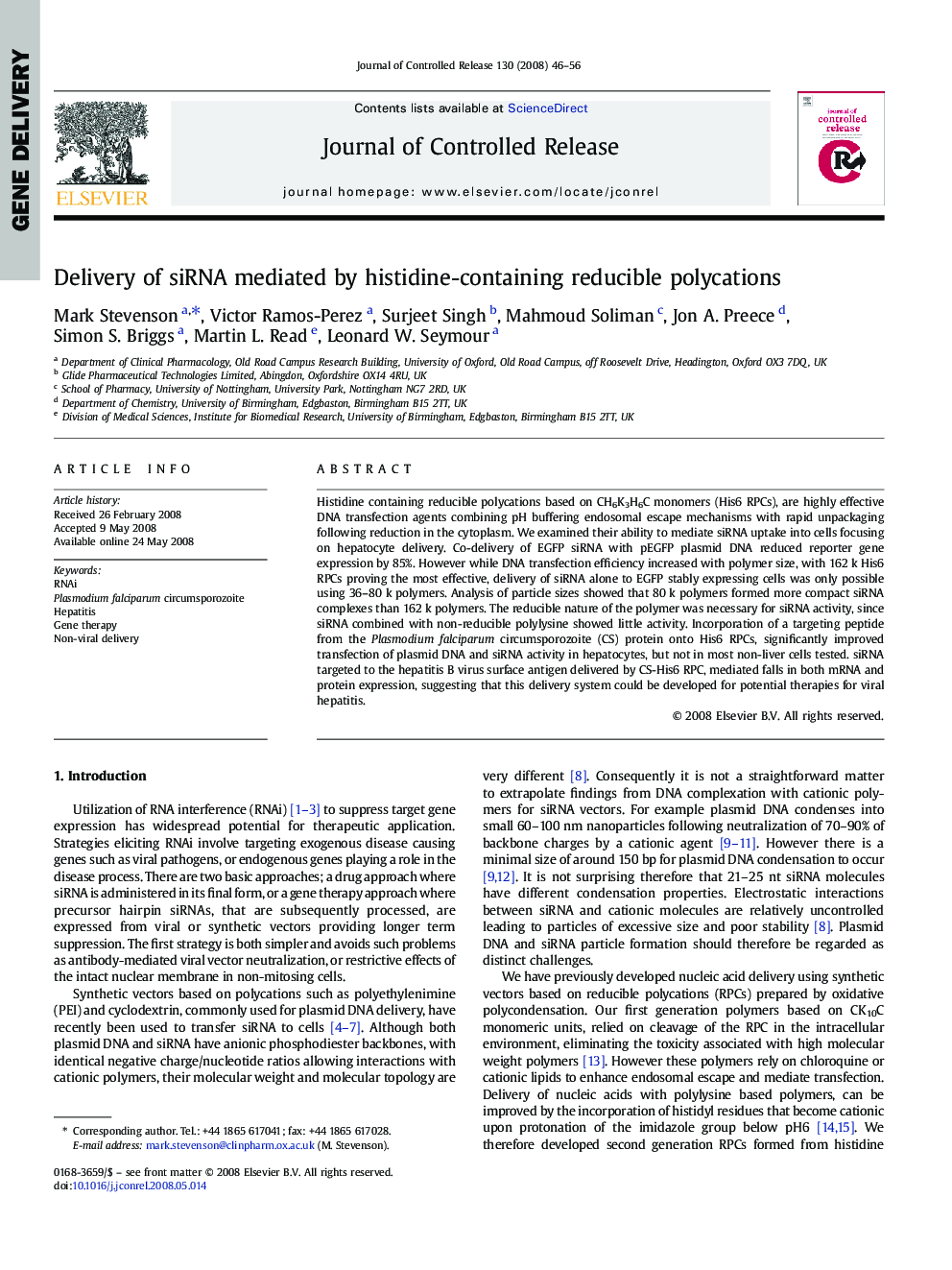| Article ID | Journal | Published Year | Pages | File Type |
|---|---|---|---|---|
| 1426831 | Journal of Controlled Release | 2008 | 11 Pages |
Histidine containing reducible polycations based on CH6K3H6C monomers (His6 RPCs), are highly effective DNA transfection agents combining pH buffering endosomal escape mechanisms with rapid unpackaging following reduction in the cytoplasm. We examined their ability to mediate siRNA uptake into cells focusing on hepatocyte delivery. Co-delivery of EGFP siRNA with pEGFP plasmid DNA reduced reporter gene expression by 85%. However while DNA transfection efficiency increased with polymer size, with 162 k His6 RPCs proving the most effective, delivery of siRNA alone to EGFP stably expressing cells was only possible using 36–80 k polymers. Analysis of particle sizes showed that 80 k polymers formed more compact siRNA complexes than 162 k polymers. The reducible nature of the polymer was necessary for siRNA activity, since siRNA combined with non-reducible polylysine showed little activity. Incorporation of a targeting peptide from the Plasmodium falciparum circumsporozoite (CS) protein onto His6 RPCs, significantly improved transfection of plasmid DNA and siRNA activity in hepatocytes, but not in most non-liver cells tested. siRNA targeted to the hepatitis B virus surface antigen delivered by CS-His6 RPC, mediated falls in both mRNA and protein expression, suggesting that this delivery system could be developed for potential therapies for viral hepatitis.
